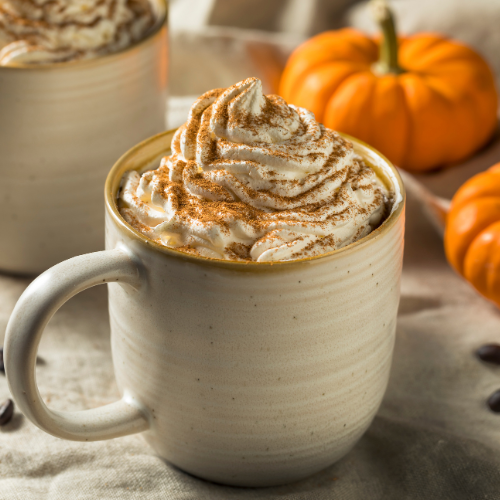In Defense of Pumpkin Spice
Every September, like clockwork, pumpkin spice season arrives. Suddenly, it feels like everything on the shelves has been sprinkled with cinnamon, nutmeg, ginger, and clove. The list goes far beyond the original latte: pumpkin spice muffins, cookies, creamers, cereals, pretzels, protein bars, granola, almonds, even dog treats. There are pumpkin spice candles, room sprays, soaps, and body lotions. If you can name a product, there’s probably a pumpkin spice version of it come fall.
Some people roll their eyes at the frenzy. Others (maybe you?) line up for that first latte of the season with genuine excitement. Either way, pumpkin spice has become more than just a flavor — it’s a cultural phenomenon. And maybe it deserves a little defense.
If you think about it, pumpkin spice isn’t even about pumpkin. Very few pumpkin spice products actually contain pumpkin at all — it’s the spice blend that signals the season. The reason it works so well is because it cues our memories. Cinnamon rolls at grandma’s house, apple pie at Thanksgiving, mulled cider on a chilly night. These spices remind us of warmth, of home, of comfort.
That’s why pumpkin spice stretches far beyond food. People buy candles, air fresheners, soaps, and lip balms in pumpkin spice not because they want to taste them, but because they want to feel something. Pumpkin spice smells and tastes like fall itself. Crisp mornings, leaves crunching underfoot, sweaters pulled out from the back of the closet. It’s a way of bottling up nostalgia and taking it with you.
Fall is a season of transition. The days shorten, the air cools, and our routines shift back into school and work mode. Pumpkin spice becomes a kind of sensory marker that helps us move from one chapter to the next. It tells us: it’s time to slow down, gather in, and prepare for what’s ahead.
There’s also something communal about it. The pumpkin spice latte, in particular, is a shared ritual. Millions of people order it every year, and even if we poke fun at the hype, it’s one of the few moments where a food trend crosses age, region, and background. Everyone seems to have an opinion, and that shared cultural conversation is part of what makes it so sticky.
Here’s the bigger lesson: food is never just food. It’s memory, comfort, culture, identity, and story. We eat to fill our bellies, yes, but we also eat to feel safe, to connect, to soothe, to mark transitions. Pumpkin spice is just a particularly loud example of how a flavor can become a symbol.
That’s not a bad thing. In fact, noticing the emotional role food plays in your life can help you make more intentional choices. If pumpkin spice season brings you joy, lean into it. But let it also be a reminder to check in with yourself: what other foods evoke comfort or nostalgia for you? What flavors carry your own traditions?
Pumpkin spice shows us how powerfully food can shape our mood. The real opportunity is to take that awareness and broaden it — to bring more intention to the meals you plan, the snacks you reach for, the traditions you create.
So yes, I’m here in defense of pumpkin spice. Not because everyone needs to love it, but because it reveals something true: food is about feeling. Food is about memory. Food is about how we want to show up in the season we’re in.
This fall, whether or not you buy the latte or the candle, pause and ask yourself: what do I want food to feel like right now? Do I want it to feel cozy, grounding, celebratory, playful? And how can I make choices that bring that feeling to life — not just through a single product, but through the way I feed myself and those around me?
Pumpkin spice might be everywhere, but you don’t need a billion-dollar marketing campaign to remind you that your food can hold meaning. You can choose what flavors and traditions anchor you this season. You can decide what you want to savor, and how you want food to help you feel at home in your own life.
So go ahead, enjoy your latte if that’s your thing. Light the candle if it makes your space feel warm. But more than anything, give yourself permission to notice the feelings behind your food — and to create a fall season that nourishes not only your body but your sense of belonging, joy, and ease.

